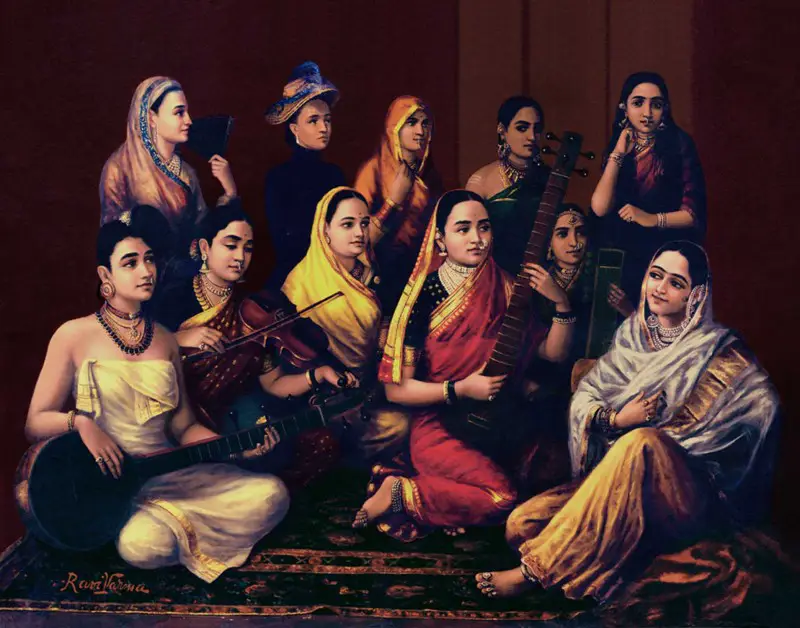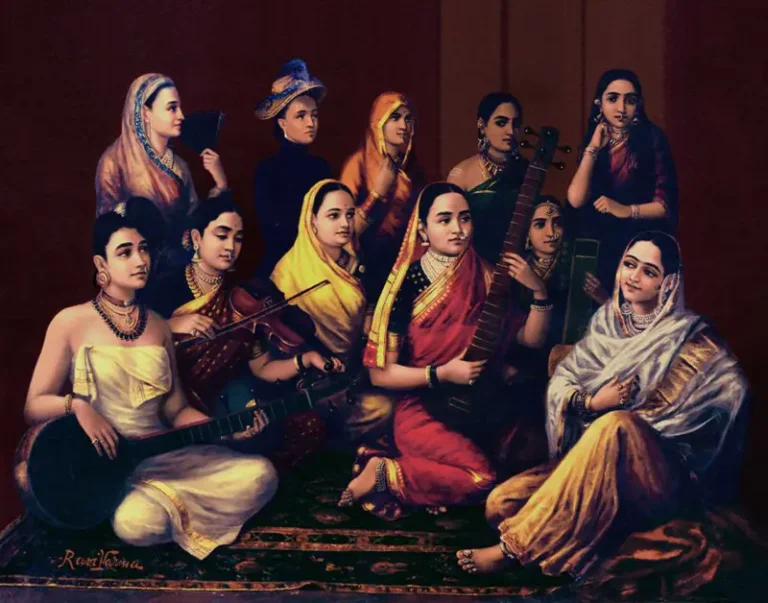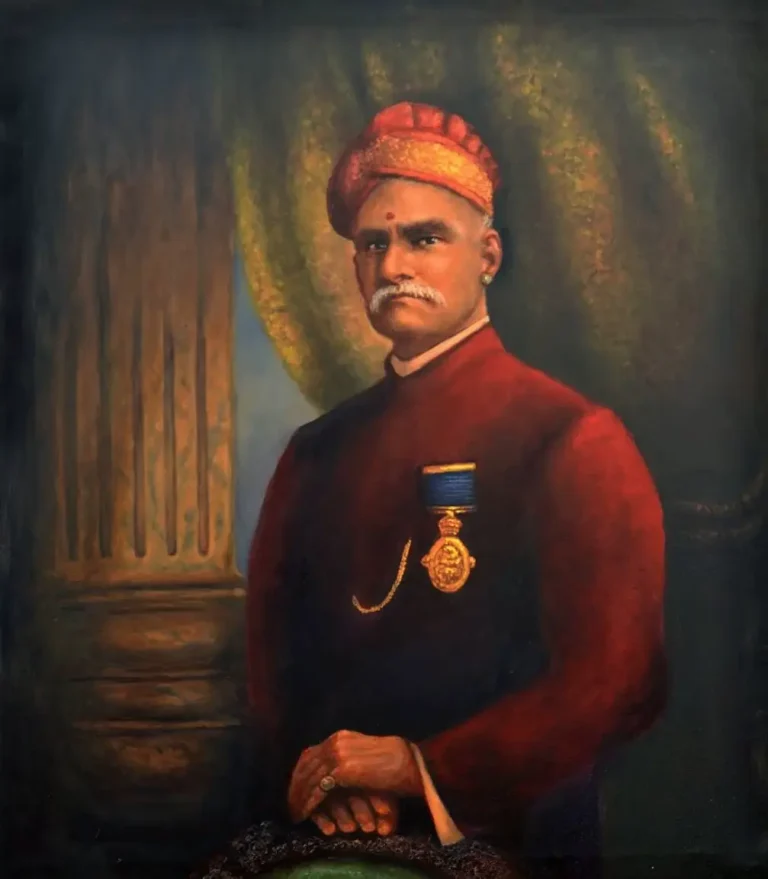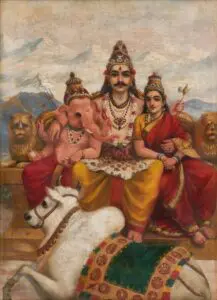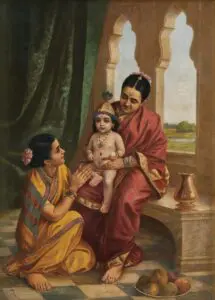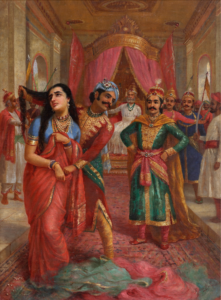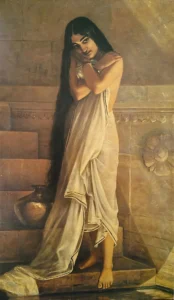Galaxy Of Musicians
Created in 1889, Raja Ravi Varma's Galaxy of Musicians presents a captivating scene where 11 Indian women symbolize the rich cultural diversity of India through a shared musical performance. Each figure is adorned in traditional attire reflective of their regional identities—this choice showcases Varma’s intention to unify India's myriad cultures under one artistic narrative. Utilizing Western techniques to illustrate Indian subjects, the artwork stands as a cornerstone of Indian realism. Galaxy of Musicians is not merely an artistic endeavor but also a reflection of the growing sense of national identity during the colonial period.
Year 1889
About the Artwork
Galaxy of Musicians, created by the renowned Indian artist Raja Ravi Varma in 1889, is a significant oil painting that celebrates the cultural and musical diversity of India. Commissioned for the Maharaja of Mysore, this artwork is currently housed in the Jaganmohan Palace in Mysore.
Description of the Painting
The painting features eleven women from various social and religious backgrounds, each engaged in playing traditional Indian and Western musical instruments. Varma meticulously captures the distinct dresses and ornaments representative of different regions, emphasizing how music serves as a unifying force across diverse customs and traditions in India.Artistic Significance
Raja Ravi Varma is celebrated for blending Indian themes with European artistic techniques, creating a unique style that resonates with both realism and idealized beauty. His works often depict scenes from Indian epics and portray women embodying cultural identities. In Galaxy of Musicians, he not only showcases individual beauty but also symbolizes a collective national identity during a time of British colonial rule. The painting reflects an emerging sense of Indian nationalism by presenting a harmonious image of unity among diverse communities.Did You Know
Galaxy of Musicians features women from various Indian communities, which showcases the cultural diversity of India in a unique artistic representation, a sentiment cherished by many Indians through the years.
The women in the painting are depicted similarly to Hindu goddesses, symbolizing national unity and a vision of an India united against colonial rule, as well as a nostalgia for India’s rich heritage.
Raja Ravi Varma’s technique of blending Western realism with Indian themes marked a departure from previous art forms and ignited debates among contemporaries about the evolution of Indian artistic identity.




